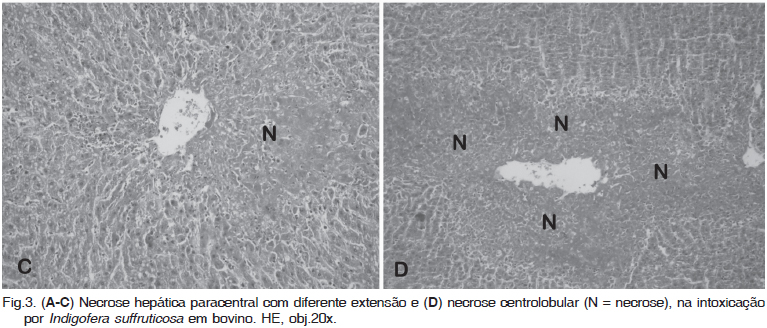Poisoning by Indigofera suffruticosa was diagnosed on a farm in the state of Paraíba, in the Brazilian semiarid region, in a herd of 25 cows and one bull. The herd was grazing for ten days in a paddock severely invaded by I. suffruticosa. Five days after the introduction into the paddock some cows showed red urine, and in ten days, when the herd was removed from the pastures, six cows had decreased milk production and hemoglobinuria. Five days after being withdrawn from the pastures, one cow showed aggressiveness and two days later was found death. At necropsy, the liver was yellowish with petechial hemorrhages on the surface and had increased lobular pattern. The kidneys were dark and with red spots up to 2mm in diameter in the surface, which extended radially into the renal cortex. The urinary bladder was full of dark red urine. Upon histologic examination the kidneys had multifocal areas of ischemic tubular necrosis with hemoglobin deposition in the epithelial cells and hemoglobin casts in the tubules. The liver had diffuse paracentral and occasionally centrolobular coagulative necrosis. The other affected cows recovered spontaneously within 3-8 days after having been moved from the paddock. It is concluded that poisoning by I. suffruticosa, despite the spontaneous recovering of most cattle, can cause the death of some affected animals by acute hemolytic anemia.
Poionous plants; Indigofera suffruticosa; Leguminosae Papilionoideae; plant poisoning; paracentral liver necrosis; hemolytic anemia; hemoglobinuria; cattle





